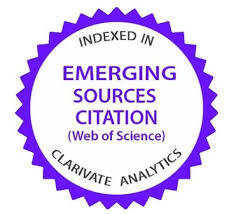Determinantes sociales de los hijos e hijas no deseados entre mujeres indígenas y mestizas de San Cristóbal de Las Casas, Chiapas
DOI:
https://doi.org/10.35197/rx.12.01.e1.2016.01.gnPalabras clave:
prevalencia, embarazo, aborto, regresión logísticaResumen
La incidencia de hijos(as) no deseados en San Cristóbal de las Casas se estima del orden del 39% de los nacimientos, está cifra tiene importantes implicaciones sobre la calidad de vida las mujeres y de sus hijos(as). El trabajo tiene por objeto cuantificar la prevalencia de hijos(as) no deseados entre mujeres indígenas y mestizas, además de distinguir sus características socioeconómicas.
La información presentada se recolectó a partir de una muestra probabilística levantada el mes de abril de 2014, a mujeres que habitaban en la zona urbana del municipio de San Cristóbal de las Casas, de entre 15 y 54 años de edad, con al menos un hijo(a) nacido vivo. Se trata de una encuesta probabilística por conglomerados en dos etapas representativa para la zona urbana y para las mujeres indígenas y mestizas.
A partir de la aplicación de un modelo de regresión logística fue posible estimar el efecto que un conjunto de variables socioeconómicas ejercen sobre las posibilidades de que una mujer tenga un hijo(a) no deseado. Los resultados indican que la mayor incidencia de hijos(as) no deseados se concentra entre mujeres analfabetas, adolecentes (de 15 a 19 años), solteras e indígenas Tseltales. Sin embargo, la prevalencia es alta en todos los grupos étnicos y todos los estratos socioeconómicos, por lo que es muy importante entender el efecto de cada variable ejerce sobre la ocurrencia del fenómeno, con el objetivo de proteger a las mujeres (y sus hijos(as)) quienes se ven vulneradas por los efectos de dichas variables.
Descargas
Citas
Barber, J. y East, P. (2009). “Home and parenting resources available to siblings depending on their birth intention status”. In: Child development; 80(3): 921-939.
Brosius, A. L. (2008). “La situación demográfica de los países de estudio”. En: Transición demográfica, políticas sociales y las cuentas nacionales de transferencia; pp. 14-18.
Cochran, W. (1969). Técnicas de muestreo. 3ª Impresión. Editorial Continental S.A. D.F. México. CONAPO. (2000). Índice de marginación (1990, 1995, 2000 y 2010). D.F. México.
CONAPO. (2013). San Cristóbal de Las Casas: grado de marginación por AGEB, 2010. México D.F.
CONAPO. (2014). “Construcción de hipótesis sobre la evolución futura de los fenómenos demográficos”. En: Dinámica demográfica 1990-2010 y proyecciones de población 2010- 2030.
CONEVAL. (2010). Mediciones de la pobreza por estado (1990-2010). D.F. México.
Dibaba, Y., Fantahun, M. y Hindin, M. J. (2013). “The effects of pregnancy intention on the use of antenatal care services: sistematyc riview and meta-analysis”. In: Reproductive Health. 10 (50): 1-10.
Faulín, F. F. J. (2006). Bioestadística amigable. Madrid: Díaz de Santos.
Foster, D. G., Biggs, M. A., Amaral, G., Brindis, C., Navarro, S., Bradsberry, M. y Stewart, F. (2006). Estimates of Pregnancies Averted through California's Family Planning Waiver Program in 2002. En Perspectives for Sexual and Reproductive Health. 38(3):126–31.
Goicolea y San Sebastian. (2010). Unintended Pregnancy in the Amazon Basin of Ecuador: a multilevel analysis. En Int J Equity Health;n9:14.
Hernández, M. F., López. V. R. y Velarde, V. S. I. (2013). “La situación demográfica en México. Panorama desde las proyecciones de población”. En: La situación demográfica de México. 2013. CONAPO.
Hilbe, J. M. (2009). Logistic Regression Models. Chapman & Hall/CRC Press. Hosmer, D. y Lemeshow, S. (1989). Applied logistic regression. New York: Wiley. Hosmer, D. y Lemeshow, S. (2000). Applied logistic regression. Chichester: Wiley. INEGI. (2005). Mujeres y Hombres en Chiapas.
INEGI. (2011). “Características demográficas”. En: Principales resultados del Censo de Población y Vivienda 2010. Chiapas; pp. 1-18.
INEGI. (2012).” Información estadística. Población”. En: Perspectiva estadística de Chiapas.
Diciembre 2012; pp. 28-40.
Juárez, F., Singh, S., Meddow, Z. I. y Wulf, D. (2013). “Embarazo no planeado y aborto inducido”. En: Embarazo ni planeado y aborto inducido en México: causas y consecuencias. Guttmacher Institute y Colegio de México; pp. 19-24.
Langer, G. A. (2003). “Embarazo no deseado y el aborto inseguro: su impacto sobre la salud en México”. En Gaceta Médica de México, 139(1): 3-7.
López de la Cruz, Y. (2010). El arraigo del embarazo indeseado y sus fatídicas consecuencias en las culturas indígenas centroamericanas. En Revista Cubana de Obstetricia y Ginecología, 36(10): 15-23.
McCrory, C. y McNally, S. (2013). The effect of pregnancy intention on maternal prenatal behaviors and parent and child health: results of an Irish cohort study. Journal of Pediatric and Perinatal Epidemiology, 27(2): 208-215.
Shah, P., Balkhair, T., Ohlsson, A., Reyne, J., Scott, F. y Frick, C. (2011). “Intention to become pregnant and low birth weigth and preterm birth: a systematic riview. En: Matern Child Health. 15: 205-2016.
Shapiro, M. C., Selwyn, B. J., Smith, D. P. y Sanderson, M. (2005). “Parental pregnancy intention and early childhood stunting: findings from Bolivia”, en International Journal of Epidemiology. 34(2):387-96.
Shapiro, M., Selwyn, B. J., Smith, D. P., Sanderson, M. (2007). The impact of pregnancy intention on breastfeeding duration in Bolivia and Paraguay. En Studies in Family Planning; 38(3):198-205.
Singh, A., Singh, A. y Mahapatra, B. (2013). The consecuences of unintended pregnancy for maternal and child health in rural India: evidence from prospective data”. En: Materna Child Health. 17: 493-500.
Singh, S., Sedgh, G. y Hussain, R. (2010). “Unintended pregnancy: worldwide levels, trends, and outcomes”. En Studies in family planning. 41(4):241-50.
Viqueira, J. P. (1995). “Los Altos de Chiapas: una introducción general”. En: Viqueira, PJ y MH, Ruz (edit.). Chiapas. Los rumbos de otra historia. UNAM, CIESAS, CEMCA Universidad de Guadalajara, pp. 219-236.
Descargas
Publicado
Cómo citar
Número
Sección
Licencia
Derechos de autor 2016 Gerardo Núñez Medina, María Georgina Rivas Bocanegra, Hilda María Jiménez Acevedo

Esta obra está bajo una licencia internacional Creative Commons Atribución-NoComercial 4.0.
Usted es libre de:
- Compartir — copiar y redistribuir el material en cualquier medio o formato
- Adaptar — remezclar, transformar y construir a partir del material
- La licenciante no puede revocar estas libertades en tanto usted siga los términos de la licencia
Bajo los siguientes términos:
- Atribución — Usted debe dar crédito de manera adecuada , brindar un enlace a la licencia, e indicar si se han realizado cambios . Puede hacerlo en cualquier forma razonable, pero no de forma tal que sugiera que usted o su uso tienen el apoyo de la licenciante.
- NoComercial — Usted no puede hacer uso del material con propósitos comerciales .
- No hay restricciones adicionales — No puede aplicar términos legales ni medidas tecnológicas que restrinjan legalmente a otras a hacer cualquier uso permitido por la licencia.








